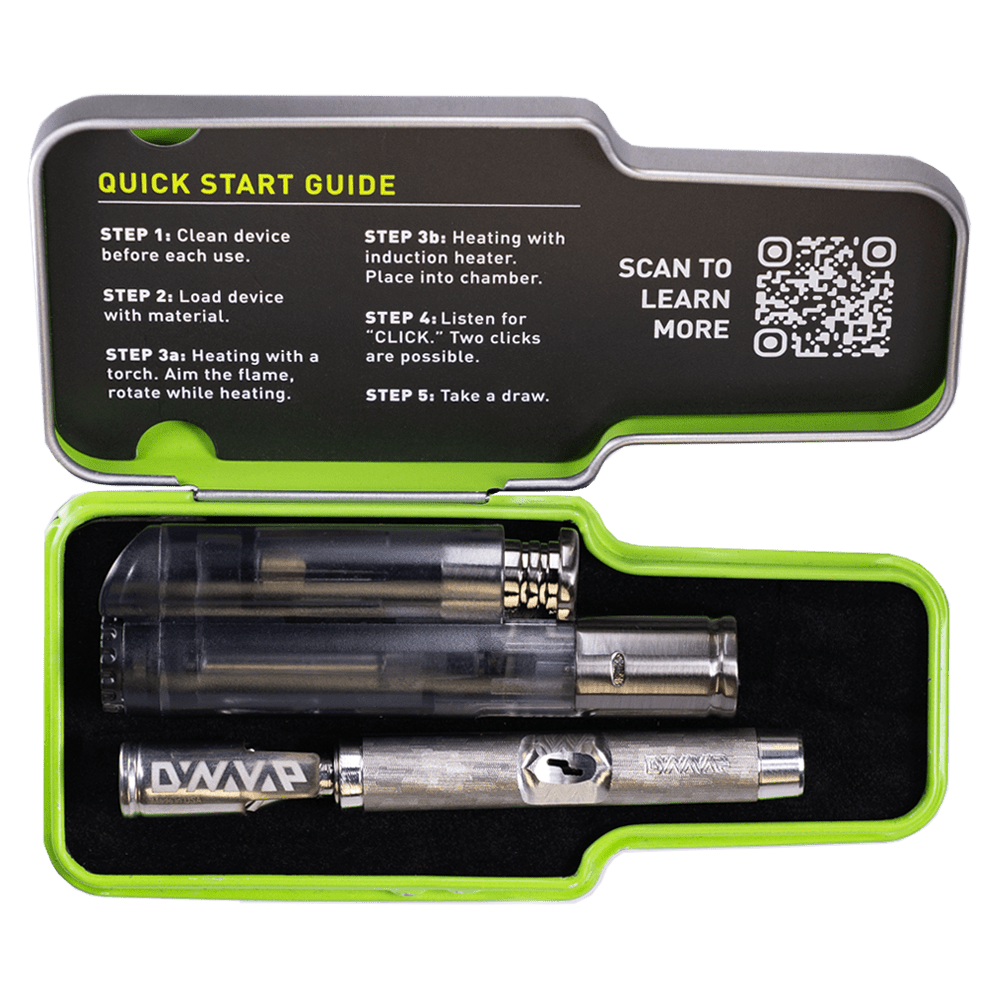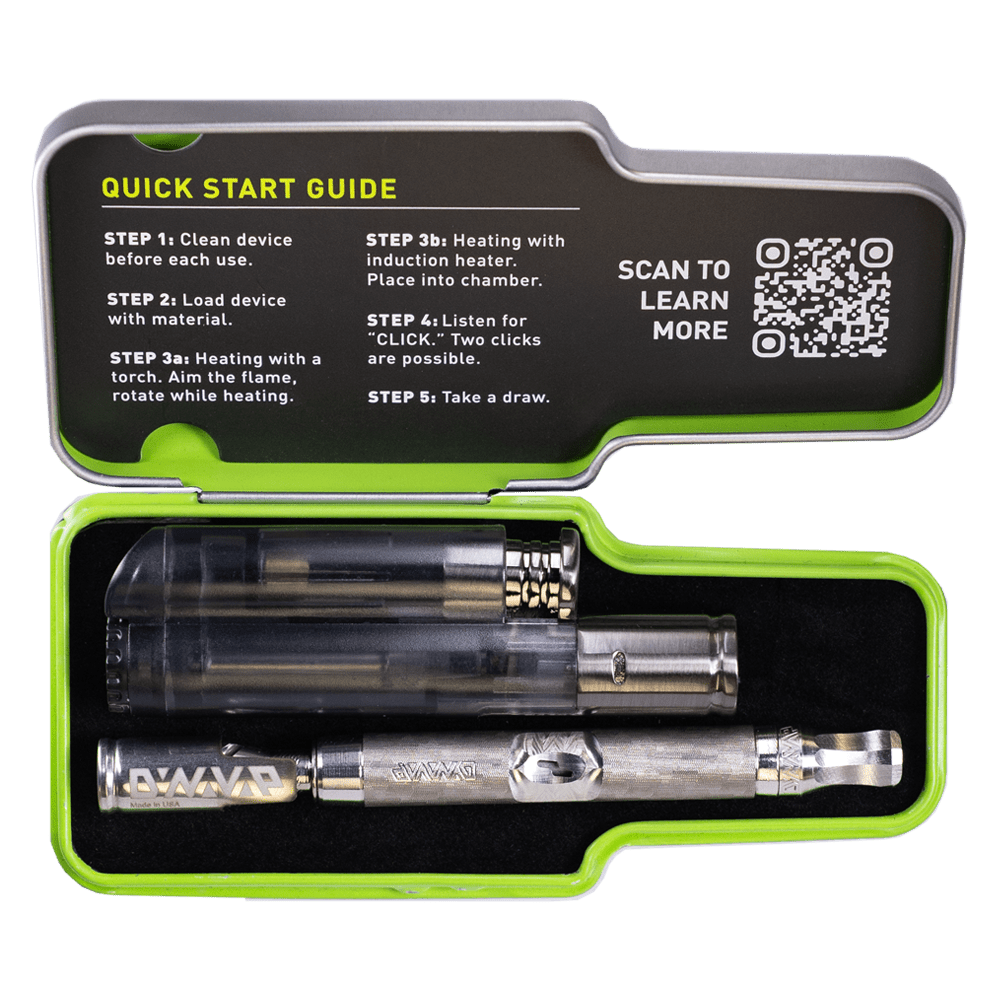Inhalation represents one of the most enduring and popular methods of consuming weed. Fun fact: the earliest record of weed inhalation dates back to the fifth century B.C. Greek historian Herodotus, who described how the Scythians inhaled cannabis smoke to purify themselves after burying the dead.
In other words, weed inhalation has been around for a really long time. But one thing that has changed is how we inhale our favorite plant. In the centuries since humans first started inhaling cannabis we’ve come a long way, coming up with crazy and creative methods to get it into our lungs.
Fast forward to the present day where there are myriad different ways to inhale, and a much greater understanding of what constitutes proper, safe inhalation technique. In this article, we’ll walk you through everything you need to know to inhale weed safely and effectively so you can protect your health, and get the high or therapeutic benefits you’re looking for.
Understanding the Basics of Inhalation
When we inhale weed, we generally either smoke it or vape it. But within these two major inhalation techniques lie a range of more specific methods. Marijuana smokers can use joints, blunts, bongs, or pipes. Vapes are also available in different formats: there are disposable vapes, portable vapes and desktop vapes, and more.
However, vaping can also be categorized in another way. One method of vaping is mouth-to-lung (MTL), where vapor is inhaled into the mouth and then into the lungs, the way a cigarette is smoked. The other method is direct-to-lung (DTL) or sub-ohm vaping, similar to the way a shisha pipe is smoked. To sum up, there are different methods or formats of inhaling weed, and then there are distinctive ways to inhale the hit into your lungs.
When it comes to cannabis, inhalation methods like smoking and vaping boast some clear benefits over other forms of ingestion. For starters, inhalation is generally recognized as the fastest-acting delivery method. The active components in weed, like THC and CBD, rapidly make their way directly into the bloodstream via the lungs. The user then feels the effects start kicking anywhere from a few seconds to fifteen minutes.
If you’re seeking quick relief from pain or inflammation or looking to enjoy a fast-acting high, inhalation guarantees rapid effects. Another benefit is that the duration of inhaled cannabis lasts between 2-4 hours, which is ideal for people using medical marijuana to treat acute symptoms or those who enjoy recreational marijuana for a rapid hit.
Preparing for Inhalation
Once you’ve decided which inhalation method resonates with you most, it’s time to get down to specifics. Spend some time researching strains to arrive at one that really vibes with you.
Thinking about sharing a spliff with friends? Look for a strain that ushers in social, chatty, mellow vibes. Planning on getting deep into a creative headspace? Maybe opt for a strain that promotes focus and creativity. Total beginner? Check out some of the strains we recommend for first time cannabis consumers.
Once you’ve selected your strain, the next step is to grind that good stuff up.
Grinding weed, some would argue, is an art form. Moreover, it can dramatically enhance your inhalation experience. Uniformly ground weed allows for all the particles of the bud, including the active components like the cannabinoids, terpenes and flavonoids, to burn fully as they are heated.
Another bonus to proper grinding is that you can capture kief. Kief refers to the tiny, sticky, potent crystals of trichomes that fall through the grinder screen into the bottom chamber. Once you’ve ground enough dried flower you’ll have a sweet supply of kief to add some extra kick to your next joint or vape session.
DynaVap boasts a range of state-of-the art grinders–including mini models, electric grinders and our premium flower mill that will crumble your bud into fine, soft, fluffy herb.
Once you’ve sorted your strain and grinder, your next move is to choose a smoking or vaporizing device. If you’re wondering which to choose, it’s important to weigh up what matters most to you. Think about factors such as simplicity or ease of use, the intensity of the hit, and whether you value being able to dose on the go.
For example, if you’re after ease, discretion, and portability, a pocket-sized vape like DynaVap’s “B” represents an ideal option. If you’re a more experienced user and are looking for an intense, enhanced hit packed with flavor, the DynaVap VonG is a great option that can even be teamed with a bong.

Inhalation Using a Vaporizer
Different types of vaporizers produce distinct experiences. Vape pens, for example, tend to make smaller clouds of vapor for a more discreet experience. Portable vaporizers, like the DynaVap range, are held in the hand like vape pens, but include a heating chamber to gently heat dried cannabis flower and create clouds of vapor. Tabletop or desktop vaporizers are stationary devices that send out thick, puffy white clouds of vapor.
Controlling the airflow of your vaporizer will significantly influence your vaping experience. Increased airflow generally means less flavor, a more mellow throat hit, and larger clouds of vapor. Decreased airflow generally means more flavor, a harsher throat hit, and smaller vapor clouds. The more the airflow is open, the more you’re likely to experience a direct-to-lung hit.
Another element to vaping that strongly shapes the experience is the temperature at which you vape. Getting the temperature right will ensure you maximize your experience so you extract the most from your herb in an enjoyable way. A vape that’s too hot can make inhaling harsh and unpleasant and cause heavy body effects. On the other hand, a temperature that’s too cool will fail to activate the cannabinoids and terpenes, wasting the flower and leaving you feeling bereft.
Opinions differ when it comes to the ideal temperature range so some vape manufacturers, like DynaVap, take the guesswork out of temperature. Once a butane torch or induction heated is applied to DynaVap device, that heat is transferred to the flower through conduction and convection, gently heating and vaporizing the cannabinoids and terpenes in the cannabis plant. The user knows the device is ready to use when it makes a clicking noise. Simple.
If you’re not sure which vaporizer is right for you, take the DynaVap quiz, and remember that DynaVap’s vaporizers can also be teamed with a DynaCoil adaptor so you can vape concentrates if you wish.
Tips for Inhaling Cannabis Effectively
Although inhalation feels like a relatively straightforward enterprise (just breathe in, right?) there’s a lot more than meets the eye. The way you inhale (i.e. mouth-to-lung, or direct-to-lung like we mentioned before), the length of time you hold your breath, and the speed at which you inhale and exhale will all significantly impact your inhalation experience.
Here are the three fundamentals to remember:
A. Slow and steady inhalation
The point of smoking or vaping weed is to deliver the active compounds into the lungs, and from there, into the bloodstream. Slow, steady inhalations help to bring the smoke or vapor into the respiratory passages gently. If you hit a joint or vape breathing quickly and shallowly, the smoke or vapor will linger in the throat and nasal passages so you won’t get high.
Slow steady breathing also helps the lungs to cope with the load and minimize irritation (as opposed to a sudden, violent intake of breath.) Start with small inhalations and work your way up. Inhaling too much at once can lead to feelings of nausea or anxiety. If you start feeling this way, take a few breaths of fresh air.
B. Holding the smoke or vapor briefly
Briefly holding the smoke or vapor arguably allows your lungs more time to absorb the active components in weed, like THC. However, there’s evidence that super lengthy breath holds (think 10-15 seconds) don’t actually enhance the effects.
Furthermore, if you’re smoking marijuana, it’s not advisable to subject the lungs to tar and other toxins that arise from combustion for an extended length of time. Just a brief, mindful pause between inhalation and exhalation will work nicely.
C. Exhaling slowly and fully
Slow and deliberate exhalations allow you to control the stream of smoke as it leaves the lungs. Slow exhalations aldo help you avoid a headrush or a headache, and bring an element of mindfulness into the experience, calming the nervous system.
Troubleshooting Common Issues
Inhaling weed can be accompanied by some common issues. Here are our troubleshooting tips.
Reducing throat irritation and coughing fits
Marijuana smoke, cigarette smoke and tobacco smoke often cause coughing fits due to the presence of volatile chemicals and high combustion temperatures that irritate the lungs and throat. Even secondhand marijuana smoke has been linked to respiratory issues. If you smoke weed regularly, you may expose yourself to health risks such as respiratory infections or even lung cancer.
If you choose to smoke weed as your preferred delivery method, ensure you avoid deep drags and only hold your breath momentarily. The less time your respiratory system is exposed to the by-products of combustion, the better. Have a glass of cold water on hand when you smoke to ease and cool any inflammation in the throat.
Vaping dried flower, on the other hand, causes less lung damage. Vaping gently heats the plant material and reduces the exposure to carbon monoxide emissions, chronic respiratory symptoms, and toxin exposure while producing similar subjective effects. If you want to protect your lung health and avoid coughing fits and scratchy throats, evidence suggests vaping dried flower is the way to go. (Vaping concentrates that contain acetates, however, may lead to vaping-related lung injury.)
Chronic respiratory issues
If you’re experiencing constant coughing, lung discomfort or symptoms like phlegm, wheezing, chronic bronchitis, or shortness of breath as a result of cannabis smoking, it may be time to give smoking a rest and opt for different cannabis products, like edibles or a tincture.

Inhale Easily with Dynavap
Inhalation has long been a favored delivery method with weed users the world over, and it looks likely to remain that way.
However, these days, inhalation doesn’t have to mean rooms full of clouds of cannabis smoke or lung damage from holding your breath in after a toke. Awareness of proper inhalation techniques can help you to protect your health and gain maximum benefit from your flower.
If you’re looking for a method of marijuana use that minimizes harm and maximizes effects, dry herb vaping is where it’s at, and DynaVap’s dry herb vaporizers will set you up for ease and success.
“This content is for informational purposes only. We are not medical professionals. Nothing here is medical advice.”












